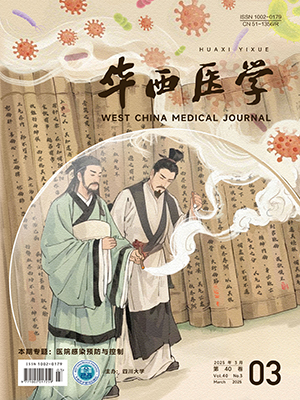Citation: HUANG Yanchun, WU Lijuan, DING Liu, LU Xiaojun, LIU Tangyuheng, YING Binwu. Diagnositic efficacy of clinical characteristics and laboratory indexes in tuberculous pleural effusion and malignant pleural effusion. West China Medical Journal, 2018, 33(8): 966-971. doi: 10.7507/1002-0179.201807065 Copy
Copyright © the editorial department of West China Medical Journal of West China Medical Publisher. All rights reserved
-
Previous Article
Correlation between the polymorphisms of inhibition genes WIF1 and DKK1 in WNT signaling pathway and the susceptibility to tuberculosis in Chinese Han population LIUTangyuheng, WANG Nian, SONG Jiajia, HU Xuejiao, ZHAO Zhenzhen, PENG Wu, BAI Hao, WU Qian, YING Binwu -
Next Article
Immunological and molecular technology assisting diagnosis: clinical characteristics analysis of 152 cases of tuberculous meningitis in northern Guizhou WANGTao, ZHOU Liang, YANG Hongxia, TANG Shufu, LI Nana, CHEN Xuerong, ZHANG Jianyong




